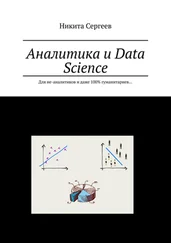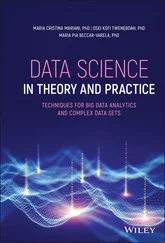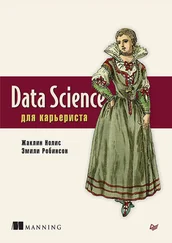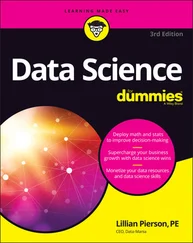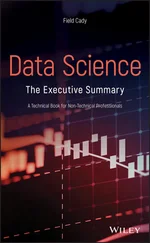Although AI and enabling technologies can carry a higher degree of panache, many of the foundational skills required to fully deliver on AI's promise are not well honed. These fundamentals of information architecture aim to address the problem of deriving value from data, which is inherently inert, not self-aware, and not self-organizing. Information architecture addresses these characteristics of data and aims to organize and contextualize data so that it can be mined for value.
An enabling technology is an innovation that can be leveraged to drive radical change in the performance or the capabilities of an organization. The Internet and wireless communication are examples of enabling technologies.
Having an expectation that AI can consistently work its magic on any data source—regardless of the type of data and regardless of the level of data quality—without having a proper information architecture is a form of naivety that is all too widespread. Information architecture is the prerequisite to maximizing the benefit of advanced analytics, especially neural nets, machine learning, natural language processing, and other forms of AI.
Organizational leaders understand that change is constant, accelerating, and arriving from all sides. In the United States, the 1933 Glass-Steagall Act forbade commercial banks from owning securities firms.
For more information, read Eric Weiner's book What Goes Up: The Uncensored History of Modern Wall Street as Told by the Bankers, Brokers, CEOs, and Scoundrels Who Made It Happen (New York, NY: Back Bay Books, 2005).
Seventy-five years later, the securities industry all but came to an end when the remaining large players, Morgan Stanley and Goldman Sachs, requested permission to become bank holding companies. Modern organizations must be willing to recognize that change can happen at any time and that when something changes, that something is also susceptible to being changed later. While the time horizon between changes can vary from seconds to years and decades, placing a corporate anchor on something that proves volatile can be disastrous.
For more information about the changes at Morgan Stanley and Goldman Sachs, read Ben White's article in the New York Times, “Starting a New Era at Goldman and Morgan” (September 22, 2008).
Competitive companies tend not to remain stagnant, especially those that formally declare through a mission or vision statement the desire to improve shareholder value. By restructuring the organization, acquiring another organization, spinning off a line of business, or growing organically, organizations continually change and evolve. Companies that change in ways beyond an existing market niche can certainly reap assistance through the use of AI. Paradoxically, if an overarching strategy is to tightly align information technology with the business, that may be a surefire way to stifle or inhibit business growth and prevent the ability to rapidly change.
An information architecture that is loosely coupled to the business strategy, the underlying data, and the practice of AI can provide the requisite degree of agility to help respond to changing business needs while lessening the burden on an IT department to predict what needs to be changed to address a new business need. Assets built by IT need to be highly adaptive.
Preventing Design Pitfalls
One of the problems that arises in an information architecture is that the data can act as a binding agent and slow down IT's ability to rapidly respond to needed changes. For example, a common practice for instantiating data is to take a real-world concept and represent that concept in a literal and binding manner. In our changing world, many real-world concepts are often just anchored to a point in time and may be susceptible to change or interpretation. Any concept that is stored is typically used, verbatim, in a program or an application and potentially on a user's screen.
Another example: a person's gender might be tagged/named as “gender” in a database, referred to as “gender” in program code, and then labeled “gender” on a screen. The data is now serving to tightly bind various components of an information architecture together. Moreover, the tight coupling is extended to the business.
Gender is a term that has changed in popular meaning and use. Formerly, gender was popularly considered an immutable designation as to a person being either male or female. Society has moved away from that binary. The binding aspects attributed to instantiating data can make it difficult for systems to adapt to a new use without a rippling effect that requires a system to go through a significant rewrite or modification.
To replace the historical use of gender, at least two concepts are needed: one to represent a biological interpretation and one to represent a mutable societal preference that can be updated to reflect any needs changes.
As indicated, a tightly coupled alignment between the business and IT may result in an inability to fully leverage data in a meaningful manner beyond the point in time that the alignment was established. Intrinsically, alignment is the result of a cognitive desire to satisfy a specific point-in-time requirement or need.
The futurist Alvin Toffler described how the speed of change forces decisions to be made at “a faster and faster pace” and reveals how waves of change are not just isolated instances but have intertwined correlations across “business, family life, technology, markets, politics, and personal life” ( The Third Wave , New York: Bantam Books, 1981). If a system is too tightly coupled to a point in time, alterations that are made to a system can lag behind the necessary business decisions that need to be taken, resulting in poor decision-making or missed opportunities simply because the system cannot be revised at the speed of business.
Influences or mandates for change to an organization can be externally driven or internally driven. External influences such as competition, government regulation, the environment, the arrival of new technology, suppliers, vendors, and partners are a few different types of stimuli that can result in the need to define a new, potentially immediate point in time. Internal influencers such as new senior management or a shift in corporate values, the execution of a management prerogative, and the availability or unavailability of resources or skillsets may create new types of demand. An information technology solution backboned on alignment (e.g., tightly coupled) with the business is likely to result in a current solution being misused and potentially damaging to the quality of the corporate digital knowledge base. A test of an information architecture is its inherent ability to facilitate the winds of change.
The difference between architecture and design is not immediately clear. Professor and author Philippe Kruchten has argued that all architecture is design. By using themes of difficulty and cost, an example can be used to help create a mental model for delineation.
A building has an external structure. Within the building, rooms are created, and furniture or other objects can be placed in each room. In this analogy, the external structure represents architecture, and the objects in a room represent design. The placement of the furniture, even if heavy, can be rearranged with minimal effort and cost. New elements can even be brought into the room over time, and other elements can be removed. The placement is designed.
The external walls may be immovable, especially if you just want to move the walls on the 50th story of a skyscraper. But, even if you could move the walls, the time, expense, and complexity can make the prospect inadvisable.
Читать дальше


![Роман Зыков - Роман с Data Science. Как монетизировать большие данные [litres]](/books/438007/roman-zykov-roman-s-data-science-kak-monetizirova-thumb.webp)
